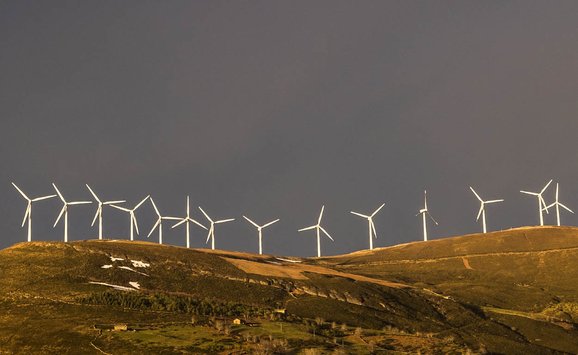Since the early 2000s, the United States has experienced an unexpected and historic shift in its energy system. Through a combination of technological, market, and policy changes, US coal production has tumbled while oil, natural gas, and renewables have surged. For communities with economies closely tied to coal production or coal-fired power generation, these changes have been disruptive at best and debilitating at worst. These challenges have been highlighted by the sharp downturn in energy jobs resulting from the COVID-19 pandemic and associated recession.
Although the decline of coal in the United States has reduced greenhouse gas emissions and other air pollutants, more significant changes to the energy system will be needed to achieve long-term climate targets such as those articulated in the 2015 Paris Agreement. These emissions reductions will reduce the deep risks associated with global climate change, reduce harmful air pollution, and offer new economic opportunities for entrepreneurs and workers in clean energy. But at the same time, these changes are likely to cause further economic disruption for workers and communities closely tied to the production, transformation, and—in some cases—consumption of fossil fuels.
Governments around the world, from Europe to South Africa to India, are wrestling with how to design policies that achieve the dual goals of addressing climate change while also supporting the communities that depend on fossil fuels for their economic livelihoods, in what is often referred to as a “just transition.” As always, thoughtful policy design will be essential to facilitate positive outcomes.
Working toward a Just Transition
The just transition concept focuses on policies that can enable fairness for workers and communities that are negatively affected by the transition away from fossil fuels. Beyond energy-dependent communities, an equitable transition must also consider the needs of low-income communities and communities of color—those that have faced a legacy of environmental injustice through the siting of energy infrastructure and other polluting facilities.
Just transition policies may take many shapes and could incorporate wide-ranging elements such as job training, infrastructure deployment, health care, pensions, and much more. The scope, scale, and targeting of these programs is very much under debate, with recent proposals from lawmakers and advocates, along with enacted legislation in states such as Colorado.
RFF’s Contribution
Determining the right mix of policies to enable a just transition will be a major challenge, and not much rigorous research is available to reliably inform the policy debates that will unfold. To help fill this gap, Resources for the Future (RFF) will publish a series of reports in the weeks and months ahead in partnership with the Environmental Defense Fund. These reports will review a wide range of existing policies and programs to provide a better understanding of which policies might be best suited to play a major role in a future just transition policy package for the United States.
For example, what does the landscape of existing just transition policies look like in the United States? What does the empirical literature tell us about the effectiveness of federal economic development programs that seek to support struggling rural communities? How is the existing system of interlocking federal workforce development programs structured, and how effective has it been? What have been the environmental and economic effects of clean energy deployment policies? What role can environmental remediation policies play in facilitating a just transition while also addressing the legacy of environmental racism?
These reports will describe an array of programs across broad policy categories, highlight their potential role in a just transition, and evaluate the evidence to date on their effectiveness. A final synthesis report will seek to distill insights from across the preceding analyses and provide a concise summary of this enormous body of policymaking, including a discussion of recently proposed legislation. Table 1 illustrates our forthcoming reports and provides examples of the specific programs reviewed in each.
In addition to this broad exploration of the just transition policy landscape, we are conducting a research project that focuses on the POWER Initiative, an Obama-era program that was designed to foster interagency collaboration in support of coal communities during a spate of mine and plant closures in the 2010s. We expect to release initial findings from this research later this year, with hopes of a more in-depth evaluation next year.
Along with these high-level reviews of federal policies, the input and efforts of local stakeholders very clearly are, and will continue to be, central to any meaningful discussion of a just transition. As such, we will seek to learn critical lessons through case studies of three US communities that have undergone, or are expected to undergo, major shifts away from coal as an economic base. These case studies will examine the historical and recent experiences of southeastern Ohio (in partnership with Ohio University); Colstrip, Montana (in partnership with Montana State University); and Tonawanda, New York.
Ultimately, the pursuit of a just transition is a global effort. Many countries, such as Germany, are further along the path of energy transition than the United States, and we can learn lessons from the successes—and failures—of other nations. As such, RFF is collaborating with international partners to explore international case studies that can help inform just transition policies in the United States.
Next Steps
The effects of a true energy transition will be broad and deep. With this new stream of work, RFF is helping to provide a map of existing policies and a rigorous base of evidence that can inform policymakers who seek to not just meet ambitious climate goals, but also support local economies and an equitable society.
Our goal, as always, will be to inform decisionmaking that enables a healthy environment and a thriving economy. So, stay tuned—we’ve got a lot more on the way.








